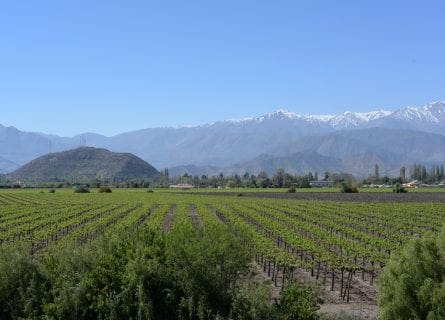
The Top Icon Wines of Chile
April 23, 2020
Explore Chile's top wines and stunning landscapes, from the Andes to luxury hotels and vineyards, highlighting diverse, high-quality, terroir-focused wines.
By: Genevieve Mc Carthy / Last updated: July 25, 2024
Estimated reading time: 9 minutes
The renowned Rioja region still maintains its status as Spain’s most important and finest producer of premium red wines. Despite this, it has to increasingly fight off competition from Ribera Del Duero and Priorat. Over a decade of serious investment and a transformation of the established winemaking styles has left the region with a bewildering array of options for the wine-lover – today, Rioja has it all! International fame, beautiful countryside full of hill-topped medieval hamlets, rising prices, and traditional and new-wave wine styles. Many winemakers have rejected the old mantra of long aging periods in American oak barrels and now use new French oak and concentrated, ripe fruit to great effect. Winemakers are also increasingly abandoning the classic Crianza, Reserva, and Gran Reserva classification system and instead flout the appellation rules to make the wines they want to make!
Discover More About Spanish Wine
In recent years, high scores from Robert Parker and the minute volumes produced by these new wave ‘cult’ Rioja wineries have ensured that prices remain buoyant. Top Riojan brands now present a desirable investment for wine collectors, particularly the less conservative ones. These collectors can see beyond the bright lights of Bordeaux and Burgundy. Winemakers design premium Rioja to last for decades and to serve as a safe bet, whether you buy it for pleasure or to make a good return; this ensures the best wines have longevity in mind. Here is the list of the best Rioja Producers for collectors, recommended by Cellar Tours.
Rioja Wine Regions Guide: Read more
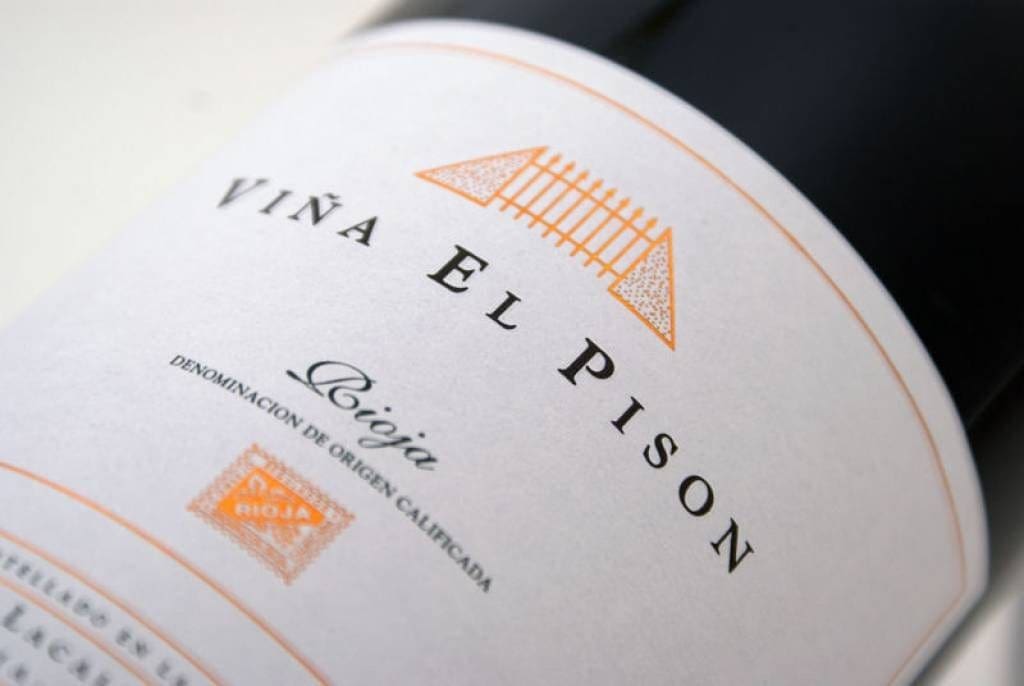
The Cosecheros Alaveses winery, under the brand name Artadi, is today producing outstanding, modern-style Riojas: taut, powerful, and built to last! The famous Viña el Pisón, their top wine, comes from just 2.4 hectares of unique vineyards that they cultivate bio-dynamically. It needs at least ten years of cellaring after release, and owner Juan Carlos Lopez de Lacalle is confident that his top wines will last at least 30-40 years. In 1985, the founders established the winery as a cooperative, but de Lacalle transformed it into a private business in 1992. When Robert Parker awarded El Pisón 100 points in 2004, the wine’s asking price soared, making it highly sought after today. Volumes are low, so expect to pay over $320 a bottle usually.
Artadi website: Read more
Contador is a new kid on the block, released as recently as 1996. Owner Benjamin Romeo produced the now legendary 96 in a centuries-old cave beneath the castle of San Vicente de la Sonsierra. He transformed his parent’s garage into a tiny winery, and Parker awarded his 2004 and 2005 vintages 100 points, catapulting the wine’s reputation (and price) into the stratosphere. However, perfectionist Romeo refused to produce a vintage in 2006, sighting indifferent fruit as the reason that superseded any commercial concerns. Indeed, this man cares about quality, evident in his powerful, expressive, and exquisite Rioja shows. Expect to pay around $185.
Contador website: Read more
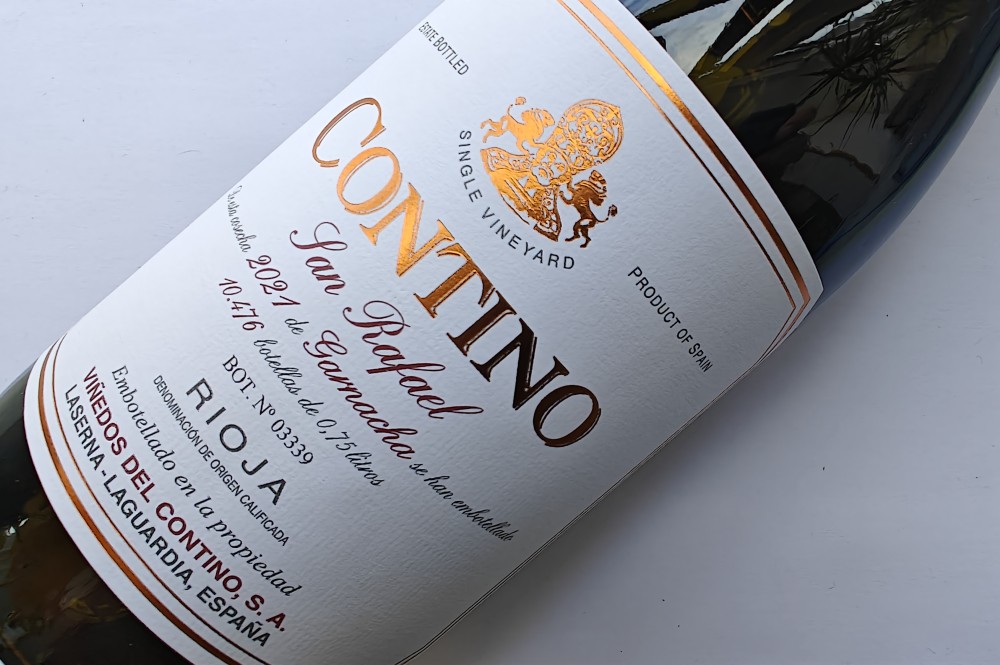
Respected winemaker Jesus Madrazo continues to take Contino to new heights; his single-vineyard star wine, the Vina del Olivo, has won awards far and wide for its velvety, supple texture, intense length, and depth of flavor. The wine giant CVNE partly owns this forward-thinking property, although they leave Jesus to his own devices regarding the wines! The bodega (winery) has 45 ha of vineyards planted around a 17th-century manor. Tempranillo typically dominates the wine, and the winemaking methods are modern rather than traditional, with French oak taking precedence over American. The resulting wine is stunning, balanced, and complex, typically retailing for about $100-$120.
Contino website: Read more
One of the very best producers in Rioja, mainly sourcing fruit from their vineyards in La Rioja Alta. Owner Miguel-Angel de Gregorio passionately advocates using New French oak and modern winemaking methods; the resulting wines are rich, concentrated, and structured and will last for decades after release. His top wine, Aurus, is sumptuous and produced from 60-year-old vines. The wine is unfiltered and vinified with whole bunches to the highest standard, with a lengthy maceration adding weight, depth, and a supple texture. This complex, impressive wine retails for about $180-$200.
Finca Allende website: Read more
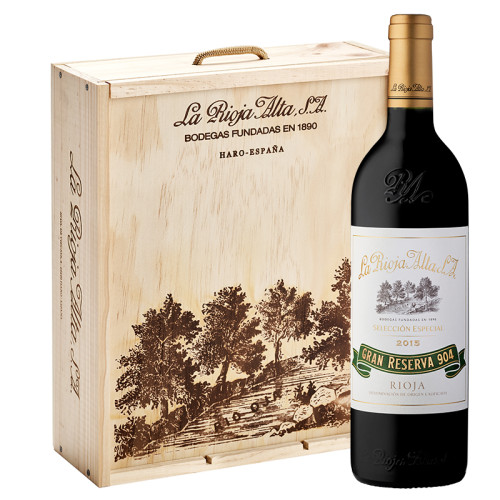
Bodegas La Rioja Alta are traditionalists in a sea of ever-increasing new-wave wineries wishing to abandon Rioja’s historic wine style and winemaking methods. Their top Gran Reserva wine, the 904, stands as a monument to the sublime nature of traditional Rioja: they age it for six years in American oak and four in the bottle, producing this fantastic wine only in the best vintages. A blend of 85 percent Tempranillo, plus Mazuelo and Viura, it has a complex, deep aroma and classically a bright, brick-red color. Although approachable upon release, savvy collectors highly seek old vintages of this venerable wine, marking it as a great value investment option. With volumes not being low, one can obtain a bottle for as little as $60-$70.
La Rioja Alta website: Read more
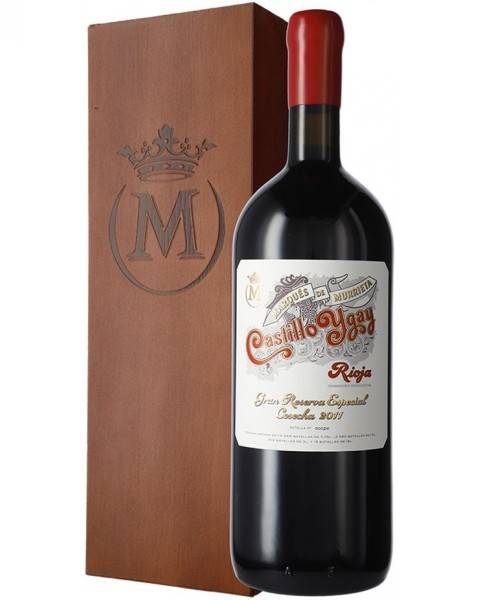
One of Rioja’s oldest Bodegas, Marques de Murrieta, was established in 1852 by the great pioneer Luciano de Murrieta, the first to export Spanish wine in barrels. They remain staunch traditionalists, aging the wines for long periods. At one time, they would bottle the wines immediately from the barrel before shipping. And despite their concession to modernity with the fruit-driven Dalmau, their star wine remains the incredible Castillo d’Ygay Gran Reserva Especial, only made in exceptional years. This expensive and sought-after wine comprises 70% Tempranillo, 12% Garnacha, 13% Mazuelo, and 5% Graciano. At its best, the wine is splendidly rich, complex, and of a different order—a true Rioja icon, available for a mere $200.
Marques de Murrieta website: Read more
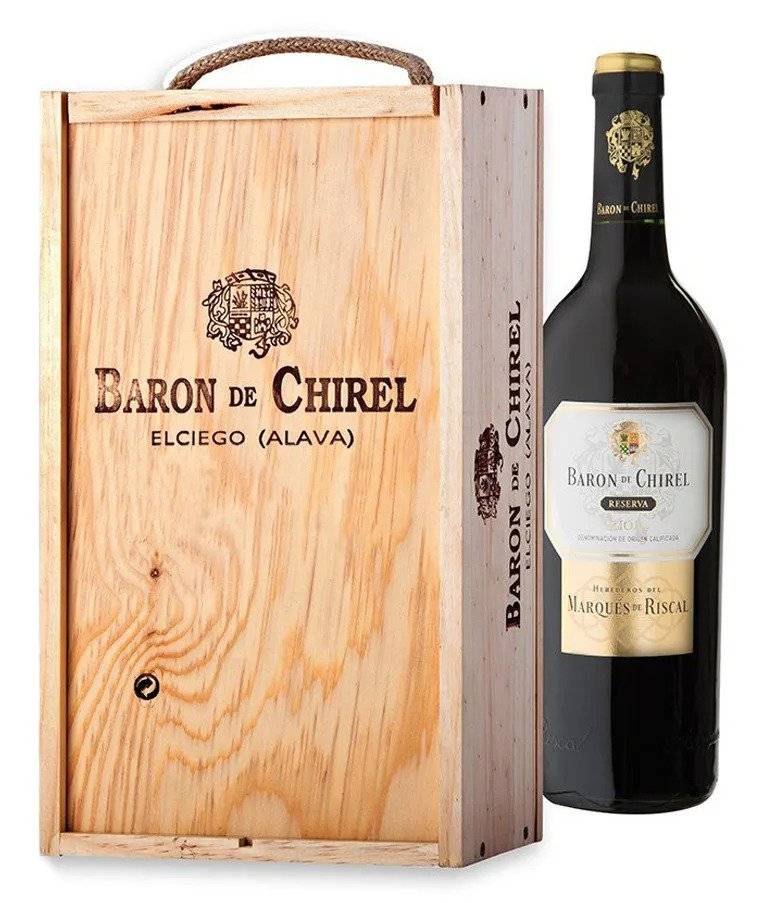
Rioja’s oldest Bodega, Marques de Riscal, was founded in 1860 by Don Camilo Hurtado de Amezaga and was the first to introduce the Bordeaux vinification system. But despite their long heritage of producing classical Riojan wines, Marques de Riscal was also one of the first wineries to plant Cabernet Sauvignon in Rioja and blend it into their superstar wine – Baron de Chirel. Made with 50 percent Tempranillo and Cabernet, it is still today one of the region’s finest and long-lived wines: rich but structured and firm in its youth. It requires at least 5 to 7 years of aging in the bottle to enjoy at its best. However, given the quality of the offer, the prices have remained reasonable; you can purchase a bottle for $65-$75.
Marqués de Riscal website: Read more
This long-established classical name in Haro continues to produce Rioja’s most aromatic and balanced reds. Muga, founded in 1932, moved to a new bodega near the railway station in Haro in 1972. It is a small family-run winery making some excellent, traditional Riojas; however, their approach is wisely multifaceted; a fiercely traditional bodega has also embraced modernity with its thoroughly modern-style Aro Rioja, a wine of great depth, elegance, and power. A blend of 60-year-old Tempranillo and Graciano ages for 18 months in new French oak. The result is an awe-inspiring new wave Rioja, loaded with vibrant blackberry fruit and velvety tannin. If you have the patience, give this beauty at least five years bottle age. Available from $180-$350, this should be on any collector’s shopping list!
Muga website: Read more
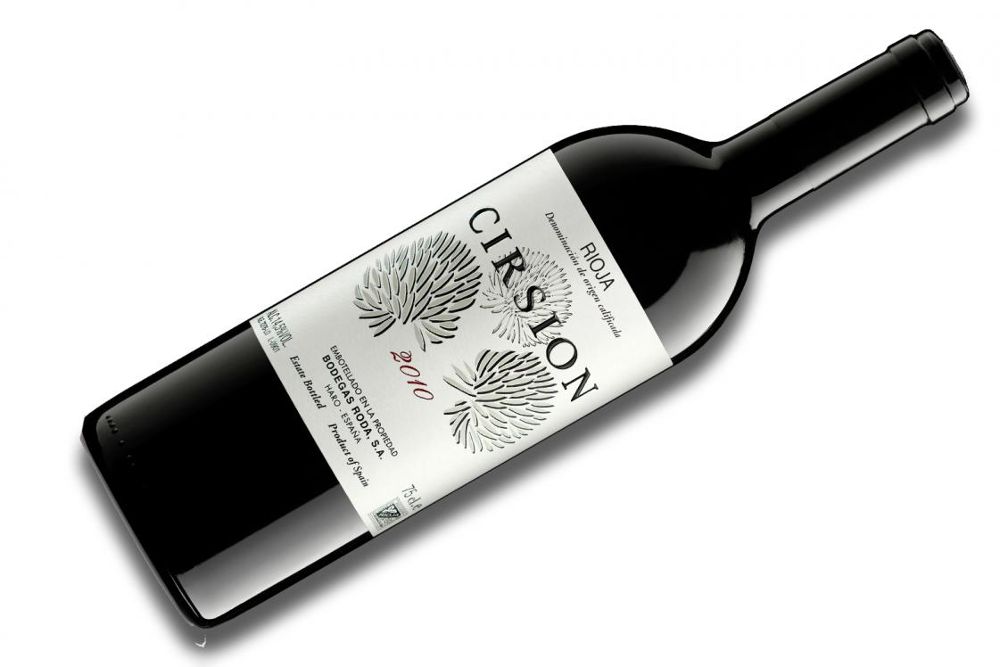
An impressive, modern bodega near the railway station quarter in Haro has produced serious Reserva reds from low-yielding Tempranillo for over a decade. Established in 1986, the property features vineyards that are over 40 years old, a fact reflected in the pedigree of Roda I Reserva. This wine is powerful and concentrated, yet it retains Tempranillo’s characteristic freshness and supple texture. However, the super-cuvee Cirision causes the most excitement amongst collectors and connoisseurs. It is undoubtedly one of the best new style Riojas – rich, structured, and cedary, a wine of real finesse and breeding. Unsurprisingly, prices are high, so expect to pay around $230-$300 for a bottle.
Roda website: Read more
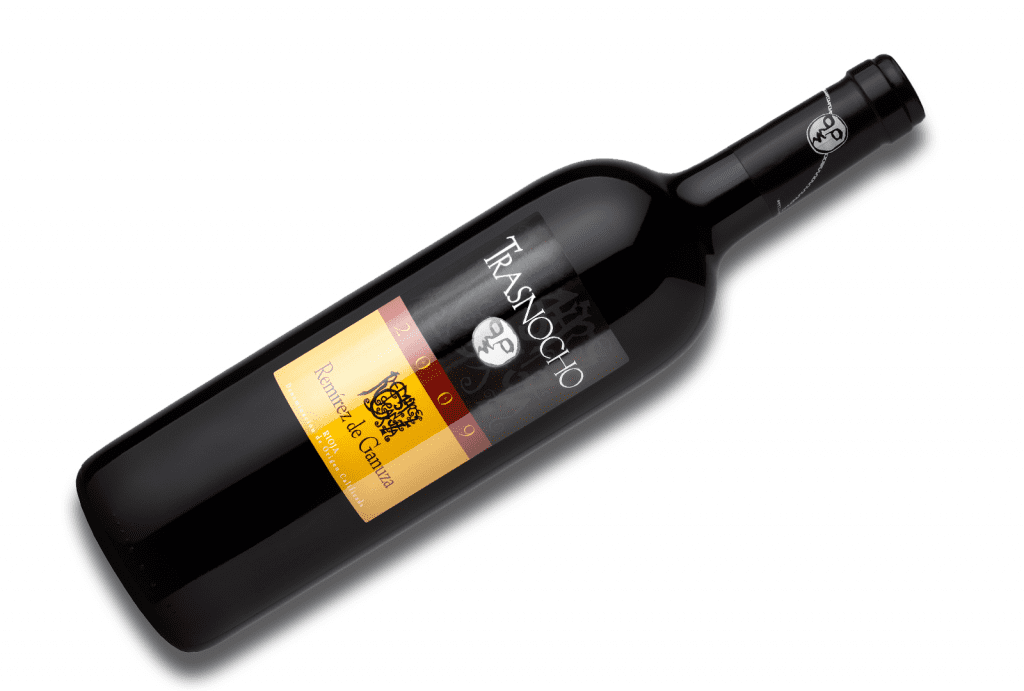
Fernando Remirez de Ganuza established this top-quality Rioja bodega as recently as 1989. Today, they work with over 80 hectares of vines in the Rioja Alavesa sub-zone, producing three excellent reds and one super-cuvee – Trasnocho – of real class and destination. It epitomizes modern, supercharged Rioja: opulent, exotic, massively extracted but balanced. Yours for the princely sum of $150 a bottle.
Remirez de Ganuza website: Read more
If you would like us to customize an exclusive luxury tour, contact us and let us know your travel plans. We offer luxury food and wine tours for private groups of a mininium two guests. In addition, all of our private, chauffeured tours are available year-round upon request.


Shirley Birkettsays:
December 8, 2019 at 5:38 am
Hello, I am trying to think of the name of a rioja I used to buy several years ago. It was a full bodied red wine and had a name like a mans first and last name. I’m not dredging it out of my brain yet. Seems like part of the name was something like barbera.
Celiasays:
October 14, 2013 at 7:08 pm
These are some nice wines! I also recommend the Remelluri Gran Reserva.